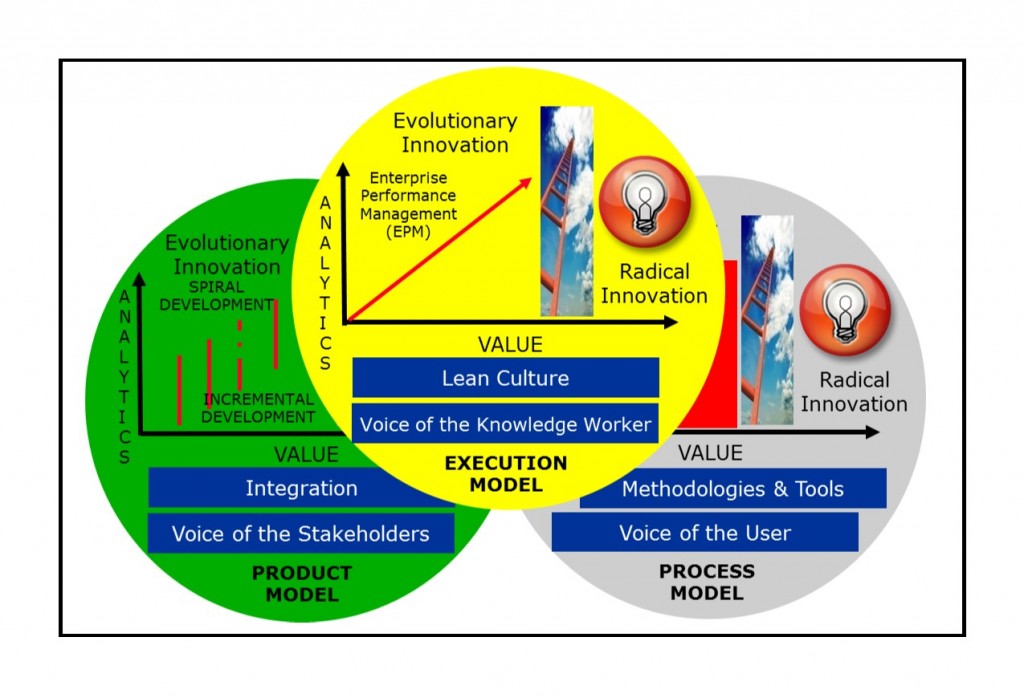Rethinking Innovation : A Broader Notion
In 1973, Dr. Peter Drucker, the corporate consulting guru, said “because the purpose of business is to create a customer, the business enterprise has two — and only two — basic functions: marketing and innovation. Marketing and Innovation produce results; all the rest are costs.” During the last forty years, Marketing has become a well established practice; however, Innovation is still an evolving science, and its definition is still being vigorously debated by the Innovation Management community. I propose a broader definition of Innovation which is also depicted in the following Innovation Management Model.
“Innovation is Multi-disciplinary Radical & Evolutionary R&D into materials and non-materials based Products, Processes & Execution models that incorporate enterprise innovation strategy platforms and Analytic”.
Innovation Management Model
Platforms should be designed to support an organization’s Mission. The analytics are necessary to ensure that R&D Investments produce desired outcomes.
Radical innovations result from the original thinkers who test the boundaries of human knowledge by reaching the Sky! Such radical innovations include the World Wide Web by Tim Berners-Lee, the ARPANET by the U.S. Department of Defense. Those radical innovations do not provide any substantial benefits to the end users until they are integrated into the products. For example, the World Wide Web did not provide substantial benefits until it was integrated into the Web browser products.
Evolutionary innovations are basically technology development, integration and maturity processes. They can be either incremental or spiral development.
In incremental development, the end-state requirement is known, and the requirement will be met over time in several increments. For example: when the cell phone technology was invented, it was known that the capability would be required for all U.S. locations. However, as a first increment, it was available into large cities, and the later increments extended its use to other parts of the county.
In spiral development, the desired capability is known, but the end-state requirement is not known at program initiation. The requirement will be determined by future technology maturity and feedback from previous increments and spirals. For example, President Kennedy’s national goal of “landing a man on the Moon and returning him safely to the Earth” by the end of the 1960s was a desired capability. This was achieved by Apollo 11 mission thru technology maturity and astronaut and developer’s experiences from Pre-Apollo 11 and Gemini programs.
# # #